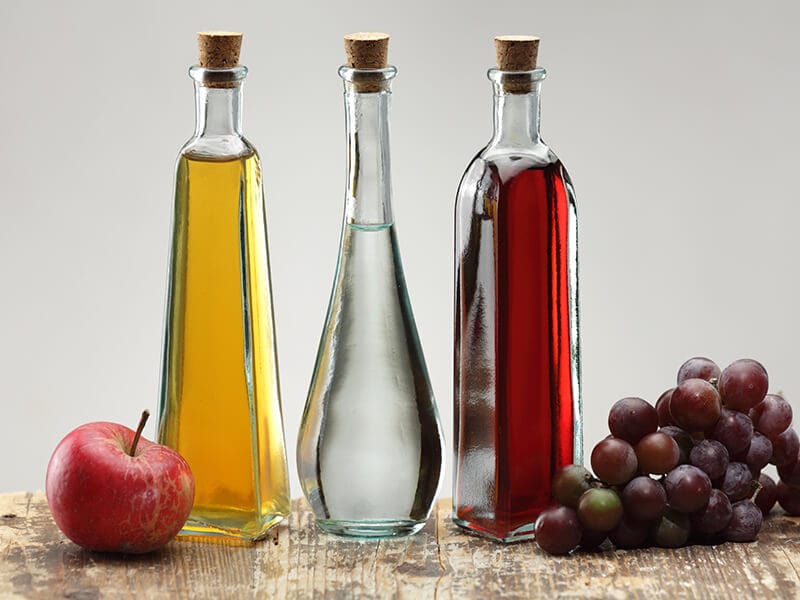What are the best red wine vinegar substitutes? Suppose that you can only think of white wine vinegar, keep reading, and be amazed at the feasible options. Apart from vinegar, you can also swap it with red wine, citrus juice, and tamarind paste.
Note that the substitution ratio in this post is only recommended, and it depends heavily on many factors, including its base ingredient or the brand you choose. Thus, taste it before you add it – you don’t want your delicious food to waste.
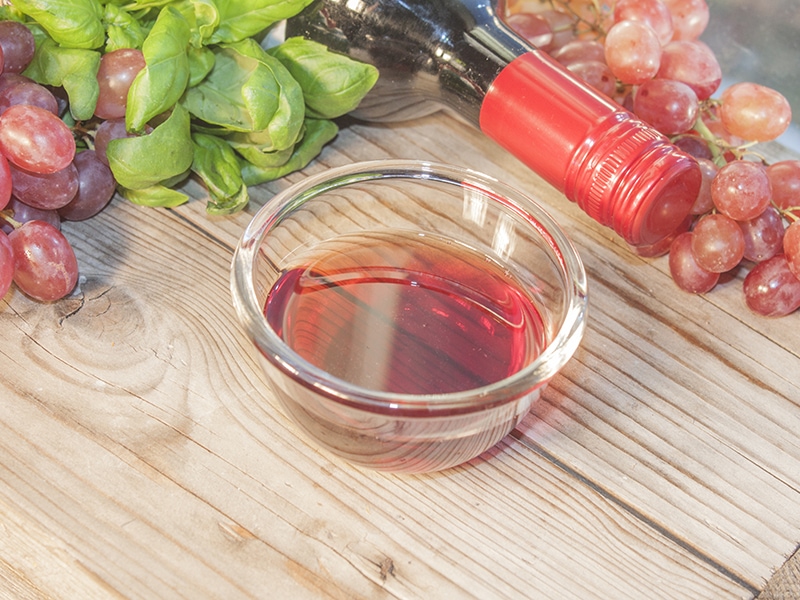
14 Best Red Wine Vinegar Substitutes For Any Recipe
There are two kinds of replacements for red wine vinegar: its vinegar cousins and the others. Check out the list I have rounded up below and see which one’s works best for you.
Vinegar Substitutes
- White wine vinegar
- White vinegar + red wine
- White vinegar
- Sherry vinegar
- Raspberry vinegar
- Rice vinegar
- Champagne vinegar
- Balsamic vinegar
- Apple cider vinegar
- Chinese red vinegar
Non-Vinegar Substitutes
- Red wine
- Lemon juice
- Lime juice
- Tamarind paste
Are you ready for the scoop about these substitutes? I bet you are!
Basic Information About Red Wine Vinegar
As the name suggests, red wine vinegar is made from red wine. It is fermented by a live starter, sometimes known as a “mother.” (1) The process usually lasts for two months, which results in a product that has endless applications in cooking and household uses.
Red wine vinegar has a strong flavor profile. Provided that the wine has been aged in advance, the intensity will be even greater. Therefore, it’s a top-notch choice for salad dressings and marinades. It is also a flavor enhancer for meat and vegetables.
Thanks to its robust aroma, red wine vinegar is used to get rid of unwanted odors in your home. In addition, it does a great job of cleaning fresh fruits and vegetables and killing weeds in your backyard.
Health Benefits Of Red Wine Vinegar
Like other kinds of vinegar, red wine vinegar brings substantial health benefits. It regulates blood sugar, speeds up digestion, and slows down premature aging. Much research has also proven that it helps fight cancer. (2)
It’s not just your internal health that gains benefits from red wine vinegar. If you use it on your hair, it will become smooth and shiny. You’ll be glad to know that red wine vinegar also relieves skin irritation.
Culinary Benefits Of Red Wine Vinegar
It is evident that red wine vinegar is widely used in cooking. It helps tenderize red meat to perfection and adds a great depth of flavor to many dishes. Moreover, the pantry staple is utilized for garnishing since it possesses lovely shades of red.
Alternatives For Red Wine Vinegar
With such strong suits, you’d love to incorporate red wine vinegar into your meals from now on. Unfortunately, you cannot find it after looking for hours in the local supermarket.
What similar choices do you have? Let’s take a look at the twelve substitutes below and a detailed explanation of their similarities and differences compared to red wine vinegar.
| Substitutes | Substitute Ratio |
| White wine vinegar | 1 tbsp of red wine vinegar = 1 tbsp of white wine vinegar |
| White vinegar + red wine | 1 tbsp of red wine vinegar = ½ tbsp of white vinegar + ½ tbsp of red wine |
| White vinegar | 1 tbsp of red wine vinegar = 1 tbsp of white vinegar |
| Sherry vinegar | 1 tbsp of red wine vinegar = 1 tbsp of sherry vinegar |
| Raspberry vinegar* | 1 tbsp of red wine vinegar = 1 tbsp of raspberry vinegar |
| Rice vinegar* | 1 tbsp of red wine vinegar = 1 tbsp of rice vinegar |
| Champagne vinegar | 1 tbsp of red wine vinegar = 1 tbsp of champagne vinegar 1 tbsp of red wine vinegar = ½ tbsp of champagne vinegar + ½ tbsp of white vinegar for extra zing |
| Balsamic vinegar | 1 tbsp of red wine vinegar = 1 tbsp of balsamic vinegar (can dilute with 1 tbsp of white vinegar or red wine) for salad, pizza, etc. 1 tbsp of red wine vinegar = ½ tbsp of balsamic vinegar + a squeeze of lemon |
| Apple cider vinegar* | 1 tbsp of red wine vinegar = 1 tbsp of apple cider vinegar 4 tbsp of red wine vinegar =3 tbsps of apple cider vinegar + 1 tbsp of red wine if it’s high in acidity |
| Chinese red vinegar | 1 tbsp of red wine vinegar = 1 or 1¼ tbsp of Chinese red vinegar |
| Red wine | 1 tbsp of red wine vinegar = 2 tbsps of red wine |
| Lemon juice | Recommended: start with a tiny amount first, then add up until desired taste is attained |
| Lime juice | Recommended: start with a tiny amount first, then add up until desired taste is attained |
| Tamarind paste | Recommended: start with a tiny amount first, then add up until desired taste is attained |
*) These substitutes can be adjusted depending on how your vinegar tastes.
Vinegar Substitutes For Red Wine Vinegar
Most vinegar is interchangeable, but not all. Some are mild in taste, some are high in acidity, and some are so distinctive that you can tell what it is even at the first whiff. That said, the next section will help you determine the best vinegar subs for red wine vinegar.
1. White Wine Vinegar
When you don’t have red wine vinegar at your disposal, your best substitute is white wine vinegar. They are very similar in taste, almost to the point that you can’t tell them apart if you don’t have a keen sense of taste.
Nonetheless, suppose that you have it, you will notice that the white variant has a lighter and more delicate flavor. It is normally paired with chicken or fish instead of hearty foods like pork or beef.
One more thing about white wine vinegar is that it does not have that appealing crimson color like red wine vinegar, so you can expect your food to be a little less appetizing but still delicious, rest assured. The substitute ratio is 1:1.
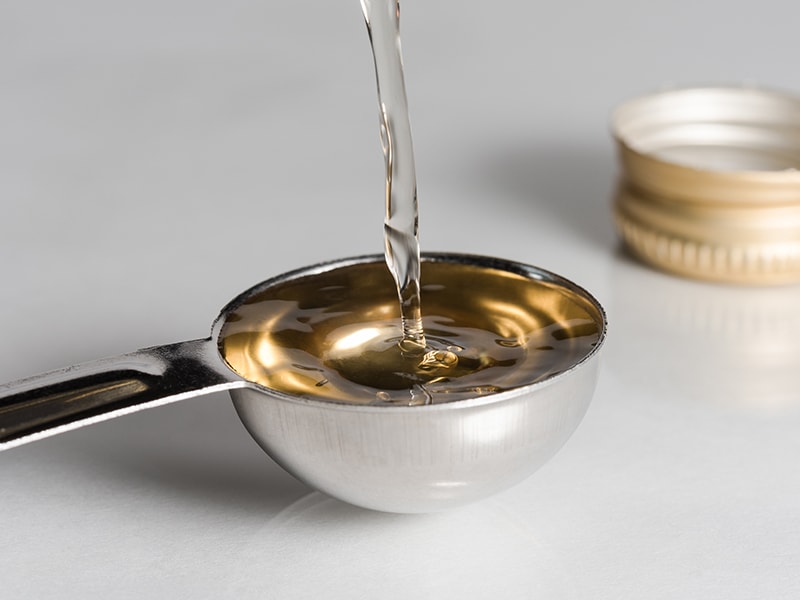
2. White Vinegar + Red Wine
Red wine comes quite close to its by-product regarding the taste, but the problem here is its lack of acidity. That said, the solution is relatively simple: add a splash of white vinegar, and you are good. You’ll get the taste and the color of red wine vinegar with no effort.
What’s the best red wine choice, you ask? Merlot or cabernet is a nice option, but my pick is vino. The result will vary slightly depending on your choice: it can taste rich or light and be in different hues. Thus, ensure that you go with the highest-quality bottle you have.
For one tablespoon of red wine vinegar, the substitution will be ½ spoon of white vinegar and ½ spoon of red wine.

3. White Vinegar
If you don’t have run out of red wine or feel like it’s a waste to use it in cooking, you’ll be glad to know that white vinegar alone can sub red wine vinegar, although I must say that the result won’t live up to your expectations.
Its taste is dissimilar to red wine vinegar, but overall, the applications are pretty much the same. People add white vinegar to marinades for an extra pop of flavor. In addition, it is also used as a tenderizing and leavening agent for meat and baked goods, respectively.
Use one spoon of white vinegar in place of one spoon of red wine vinegar.

4. Sherry Vinegar
Similar to red wine vinegar, sherry vinegar is also used in marinades or to make a glaze or pan sauce. It can also amp up the flavors of many dishes, for example, soups, stews, and salads, but I bet that you didn’t know that you can drizzle it over ice cream or cheese, too!
The pantry essential is aged for at least six months, so you can expect its taste to be very complex. It is deeply rich with nutty undertones and not too sweet when compared to other variants, such as balsamic.
Even though the flavor is much milder than red wine vinegar, the differences are not too noticeable, so you should not be worried. One spoon of sherry vinegar will do the job as well as one spoon of red wine vinegar.
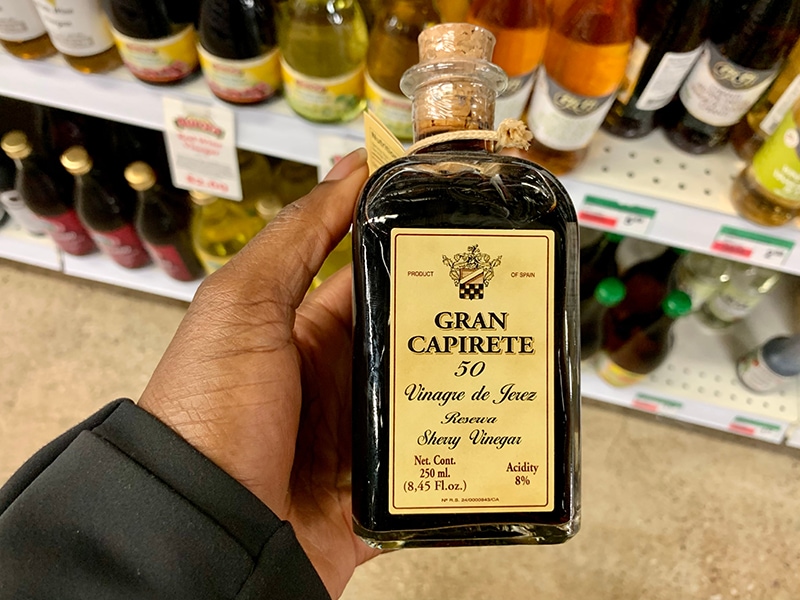
5. Raspberry Vinegar
If you give precedence to color instead of flavor, raspberry vinegar is more than delighted to help. The condiment will lift your taste with fruity notes that are more on a sweet side of the taste range.
Raspberry vinegar is more than just an accompaniment for ginger ale. People love to beat it into salads and use it in meat marinades for a melt-on-your-tongue texture.
Should you find raspberry vinegar sweeter than you need, reduce the amount you use to balance the flavor. If not, substitute it for red wine vinegar as a 1:1 ratio.
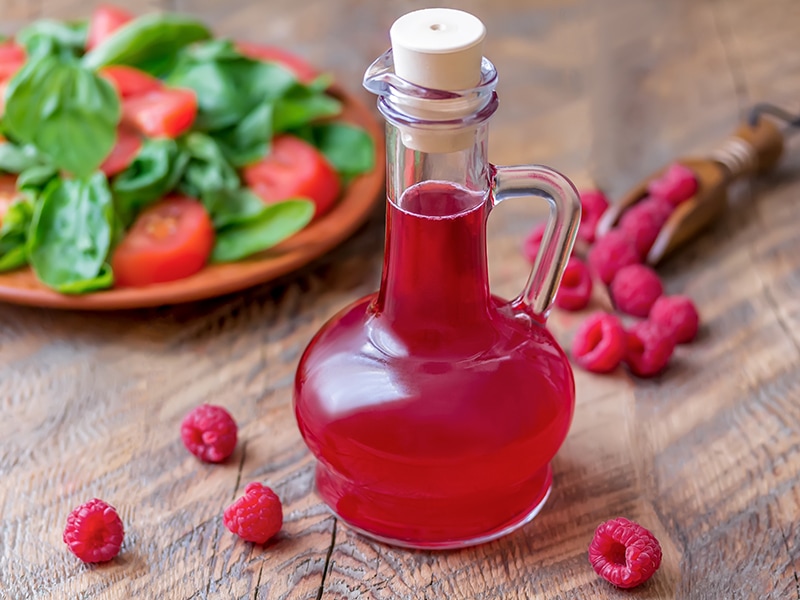
6. Rice Vinegar
Also known as rice wine vinegar, the condiment adds a sweet, delicate touch to plenty of Chinese and Japanese dishes. It is made from fermented starches in rice and offers loads of health benefits since it is dense with essential vitamins and minerals.
Rice vinegar is mild, subtly sweet, with a distinctive tangy finish. Sugar is sometimes added to balance the sweetness and tartness. Sure enough, it’s a far cry from red wine vinegar, but it’s not a bad choice when in a pinch.
Rice vinegar is sometimes confused with mirin, a Japanese condiment that also has a sweet flavor. However, due to the differences between mirin and rice vinegar, you cannot use mirin to substitute vinegar in this case. It’s best that you stick to rice vinegar as a replacement.
Swap a spoon of red wine vinegar for a spoon of rice vinegar or more if the taste is not up to your liking.
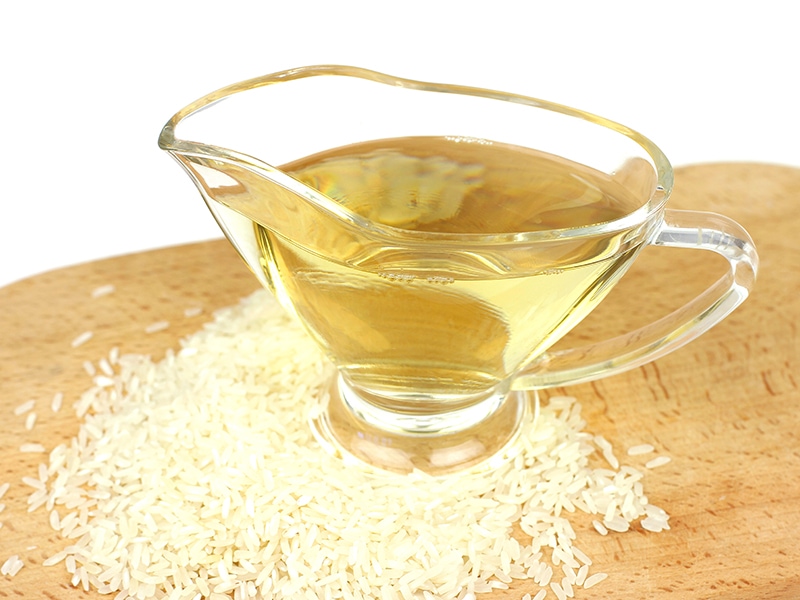
7. Champagne Vinegar
The next stand-in for red wine vinegar is champagne vinegar derived from Chardonnay and pinot noir grapes. The taste is relatively similar to its ingredients: rich and sweet with unparalleled fruity and floral nuances.
With bright flavors, champagne vinegar is preferred to make sauces like hollandaise or salsa. It’s also used to improve the flavor of caviar during the cooking process. You may notice that it’s not as overpowering as red wine vinegar, so double the dose to achieve the desired effect.
Again, use champagne vinegar as a 1:1 substitute for red wine vinegar, or mix ½ spoon of white vinegar with ½ spoon of champagne vinegar to add more zing to the flavor.
8. Balsamic Vinegar
Considering the versatility as well as the impressive shelf-life of balsamic vinegar, it’s no wonder it’s a household must-have. This ingredient has numerous uses: salad dressing, finishing sauce, grilled marinade, etc. Also, balsamic vinegar is more than welcome in fizzy beverages.
Like most vinegar, it greets your taste buds with an exceptional sharpness with a subtle sweetness and smokiness. With such unique flavors, you can be confident that balsamic vinegar will be an excellent substitute for red wine vinegar.
There are two ways to substitute red wine vinegar with balsamic vinegar. If you plan to drizzle it on salad or pizza, use it as a 1:1 ratio. If you wish, dilute it with the same amount of white vinegar or red wine for a more refined taste.
For spicy dishes, start with half the amount the recipe calls for and balance the sweetness with a squeeze of lemon juice.
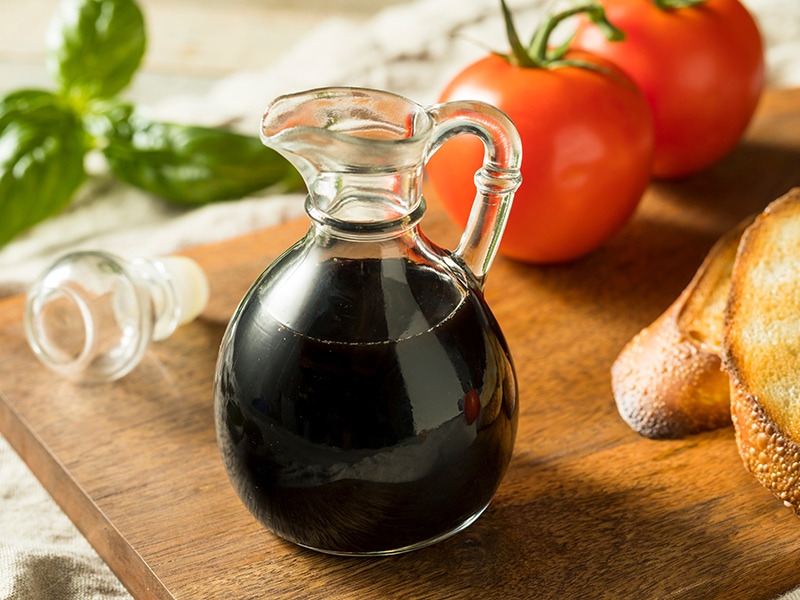
9. Apple Cider Vinegar
Apple cider vinegar, or cider vinegar is a vital ingredient in cooking, salad dressing, and baking. It’s also seen in many drinks. Instructions for beverages with apple cider vinegar and grape juice are rather common. You’ll often come across several recipes for cider vinegar detox drinks also.
Of course, its taste will remind you of apples: sweet, tart, and fruity. The taste will differ depending on what type of apple it is made from, so remember to do a quick taste test before using it in your recipes.
As I have said, not every bottle of apple cider vinegar tastes the same, so adjust it until you are pleased (the recommended ratio is still 1:1). If it’s high in acidity, balance it with red wine as in a 3:1 ratio to make a 1:1 substitute for red wine vinegar.

10. Chinese Red Vinegar
If you have ever wondered how Chinese red vinegar got its lovely color, the answer is purplish-red Monacus mold. The rice-based vinegar has an impeccable flavor and low acidity, perfect for flavoring stir-fried dishes or garnishing soups.
Since its acid content is not as high as red wine vinegar, you may follow the 1:1 replacement ratio or 1¼:1.
Non-Vinegar Substitutes For Red Wine Vinegar
If you are hosting a party where the guests are all gourmets, everything has to be on point. That said, if you have no vinegar left in your cupboard, the next four ingredients will save you from an awkward situation.
11. Red Wine
No vinegar, no problem. Pop a bottle of red wine open and use it in whatever you are cooking. However, don’t expect the same result – red wine lacks the acidity you need to make salad dressings, so your best bet is to use it mostly in marinades.
Every bottle differs from the base material and the manufacturing process, so you may want to give it a taste before using it. Some of my suggestions are Pinot Noir, Cabernet Sauvignon, or Syrah.
To make the swap happen, you will need to double the amount of red wine you use. Thus, the ratio will be 2:1.

12. Lemon Juice
When no vinegar alternatives are available, the most practical option is lemon juice. Due to its high acid component, you can drizzle lemon juice over your favorite bowl of greens without noticing many differences.
Still, if what you want is a rich, full-bodied flavor, lemon juice won’t meet the requirement. There’s no recommended ratio; it’s well-advised that you slowly add lemon juice so as to avoid the overpowering tartness.
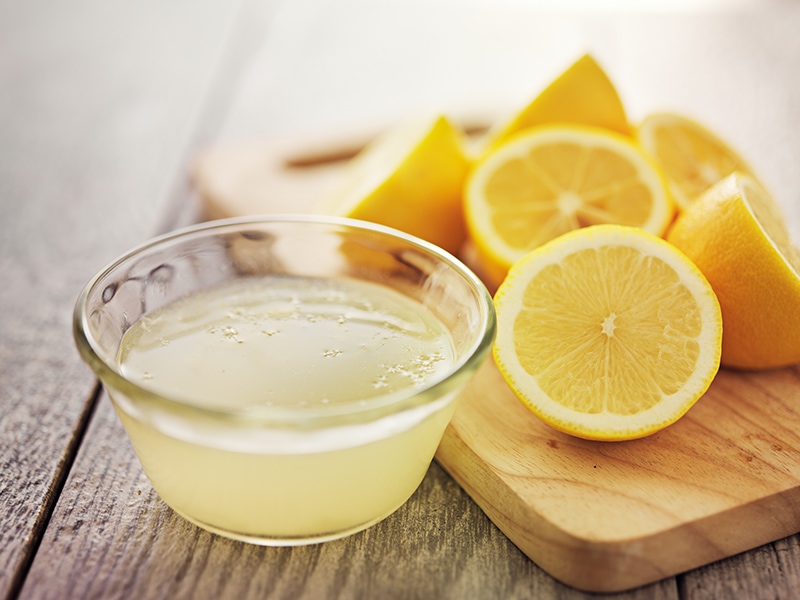
13. Lime Juice
If you can replace red wine vinegar with lemon juice, why can’t you do the same with lime juice? The two citrus fruits can be used interchangeably in many recipes. They are both high in acidity and also do a fantastic job in tenderizing meat.
Like lemon juice, you should use lime juice instead of red wine vinegar in salad only.
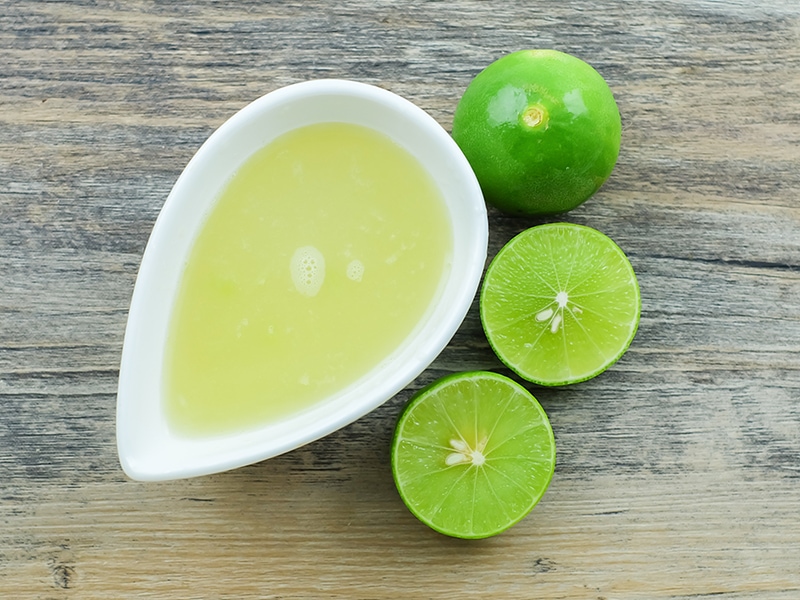
14. Tamarind Paste
The final alternative for red wine vinegar is tamarind paste, a condiment typically used in Thai, Mexican, and Indian cuisines. It is sweet and sour, with most people claiming that it resembles the taste of lemon and apricot.
Therefore, don’t have high hopes for tamarind paste – it tastes good, indeed, but it won’t be akin to red wine vinegar. Similar to lemon and lime juice, start with a tiny amount first.
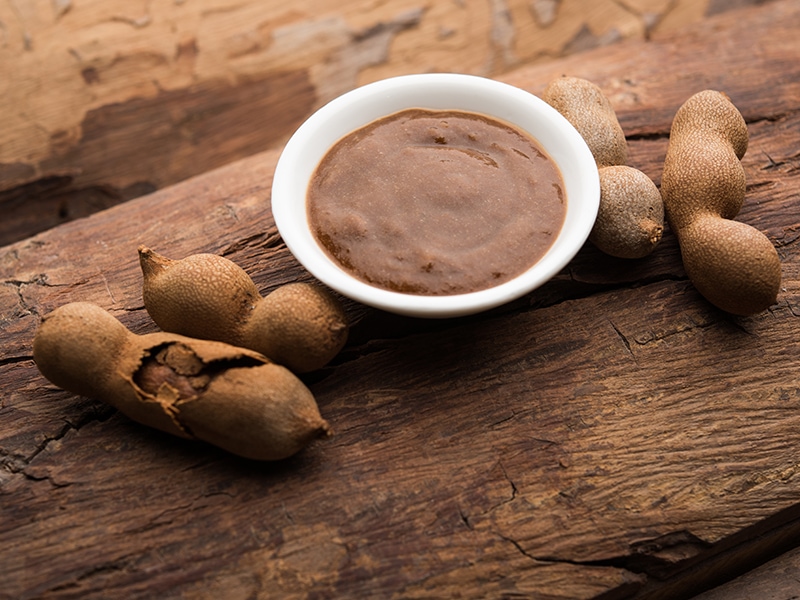
You cannot miss this tamarind paste recipe. Watch this video to know how to make Tamarind Paste:
How To Make Red Wine Vinegar At Home
Yes, you can make yourself a bottle of red wine vinegar, so long as you have a “mother,” a gelatinous substance that turns your premium wine into acetic acid, which is vinegar, thanks to the inclusion of oxygen.
While ready-made mothers are available, you can create one from scratch. Here’s how you’ll do it.
Ingredients
- Glass jar
- Alcohol of choice (alcoholic drinks under 6% ABV is recommended)
- Saucepan
- Cheesecloth
- Rubber band or string
How You Do It
Step 1: Rinse your hands carefully before getting to work.
Step 2: Heat the vinegar on a saucepan and strain it into the jar.
Step 3: Cover the top of the jar with a piece of cheesecloth. Tighten with a string or rubber band. The mother will form after 3-4 weeks.
Once you have the mother ready, mix it with a bottle of red wine in another glass jar. The older the wine is, the better your vinegar tastes. The container should not be under direct sunlight. The process will take somewhat 2 months depending on your alcohol choice.
FAQs
As usual, this section is dedicated to your frequently asked questions. Check it out!
Guide To Become A Vinegar Master
I hope that you have decided which is the perfect red wine vinegar substitute for your recipes. Admittedly, it’s difficult to understand all types of vinegar and their uses, so here’s a quick guide to help you out.
- Wine vinegar: marinades and salad dressings
- White vinegar: spicy food
- Sherry vinegar: vinaigrettes and soup toppings
- Rice vinegar: meat marinades and dipping sauces
- Champagne vinegar: marinades, dressings, and sauces
- Balsamic vinegar: salad dressings and sauces
- Apple cider vinegar: vegetarian foods and desserts
- Chinese red vinegar: Asian dishes
Again, it’s only from my viewpoint, so feel at ease experimenting with different types of food and seeing what surprises you. If you have more questions about red wine vinegar and its replacements, comment below, and I’ll be more than happy to answer them.
Nutrition Facts
1 servings per container
- Amount Per ServingCalories639
- % Daily Value *
- Sodium 47mg 2%
- Potassium 877mg 26%
- Total Carbohydrate
21.5g
8%
- Sugars 6.6g
- Protein 0.5g 0%
- Calcium 74%
- Iron 3%
* The % Daily Value tells you how much a nutrient in a serving of food contributes to a daily diet. 2,000 calories a day is used for general nutrition advice.

References
- Mother of vinegar – Wikipedia. (2021). Retrieved from https://en.wikipedia.org/wiki/Mother_of_vinegar
- 12 Amazing Red Wine Vinegar Health Benefits. (2021). Retrieved from https://wineonmytime.com/12-amazing-red-wine-vinegar-health-benefits/

